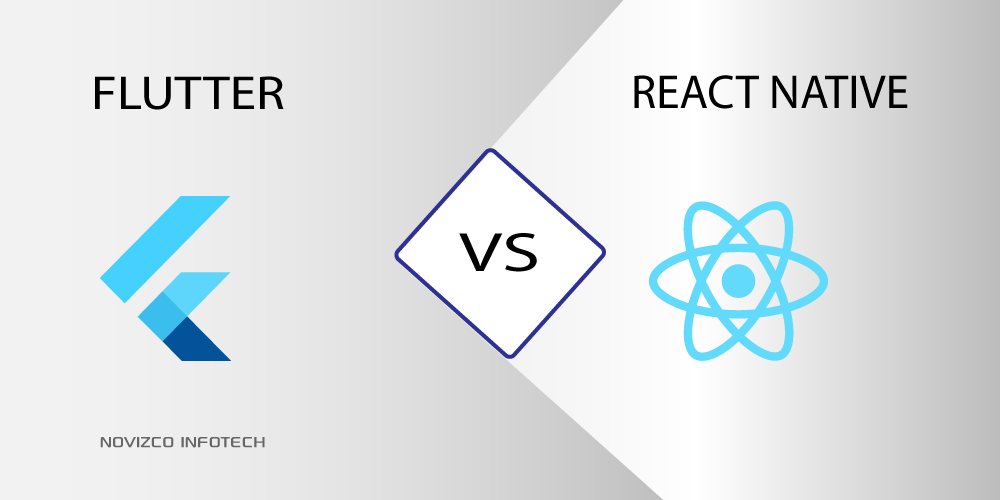
What would be the outcome if two hot cross-platform app development technologies such as Flutter & ReactNative are compared?
The two powerhouses of mobile app development technology come with various strengths & weaknesses that should be, pondered upon for a deeper understanding. Flutter, created by Google, created quite a buzz as soon as it got introduced; ReactNative, by Facebook, getting stunned by this release! A healthy competition ensues with this new trend in the mobile app development world.
The evolution of social media marketing and the growing popularity of mobile applications demand business enterprises, various firms, and organizations to launch their mobile applications. The firms are searching for options to design mobile apps, especially for Android & iOS with faster speed and fewer resources. For developers to design apps for Android & iOS, it requires them to learn two to three completely different sets of technologies. Cross-platform solutions help in designing apps for both Android & iOS faster with a simple language.
Various criteria or categories used to understand various nuances of Flutter as well as ReactNative. Let’s have a look into those via a healthy comparison
Flutter v/s React Native
Mobile application developers rely heavily on cross-platform apps for a faster designing process using a single programming language. ReactNative & Flutter are two such prominent applications used widely by the developers. ReactNative, a project started by Facebook, got open-sourced in 2015; whereas, Flutter started by Google in 2017 gained prominence in recent years.
Programming Language
ReactNative uses JavaScript while Flutter runs on the Dart programming language. With ReactNative, developers get the freedom to design any type of mobile apps via a bit of training. Developers know JavaScript like the back of their palms and hence, a dynamically typed language. Dart syntax is easier to understand; this allows developers to start working with the programming language, pretty easily. As developers were more familiarized with JavaScript, so a majority of them preferred to stick with ReactNative in the beginning, but the easiness to learn DART and its power to control every pixel in the app is changing the trend towards Flutter now.
Technical Architecture
The internal architecture of ReactNative relies heavily on the JavaScript (JS) runtime environment referred to as JS Bridge. Flux architecture, from Facebook, forms the crux of ReactNative. Flutter revolves around Dart framework and this structure provides all required technologies for developing mobile apps such as Material Design & Cupertino. Skia C++ engine is used by the Dart framework that comprises all protocols.
User-Interface Component & Development API
The frameworks should have Application Programming Interfaces (APIs) for smooth access into the native modules without any hassles. ReactNative relies on third-party libraries very heavily. Flutter framework designed with User Interface (UI) rendering components, which removes the need for third-party libraries. Flutter framework comes with the whole armoury for developing mobile apps. The widgets in Flutter allow developers to easily render UI on both Android & iOS platforms.
Developer Productivity
A key element for building apps faster, the nuance, developer productivity should not be overlooked, at any phase of mobile app development. ReactNative flows well with those developers gifted with JavaScript. The widget based development in Flutter on the other hand have made a complete paradigm shift in the app development. It not only makes the development of each UI component faster, but the re-usability gets a new definition here. The hot reload feature saves a significant amount of developing time while testing UI changes.
DevOps & CI/CD Support
Practices of Continuous Integration & Continuous Delivery are essential for any mobile app. Constant feedback aids in avoiding the release of buggy codes. There are no clear-cut instructions on how to integrate CI/CD approach into apps made with ReactNative. Flutter gets integrated with a section on Continuous Integration & Testing that includes links to external sources. For instance, CodeMagic brings forward inbuilt support for CI/CD; exclusive for mobile apps developed using Flutter. Thus, Flutter apps are easy to be used with right set-ups on CI/CD services by use of Command-Line Interface (CLI) tools.
Conclusion
Upon healthy comparison between Flutter & ReactNative, it becomes clear as a day that these both have pros & cons. Flutter seems to have come up with more cutting edge and advantageous features in the last few releases. However, both ReactNative & Flutter get used by developers for developing the majority of the mobile apps created every day.
Leave a Reply